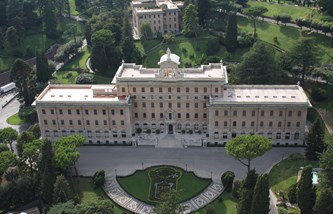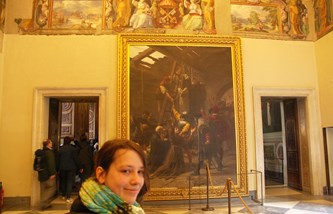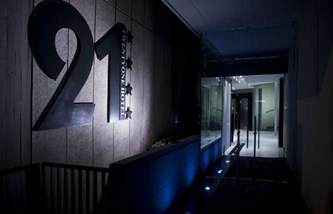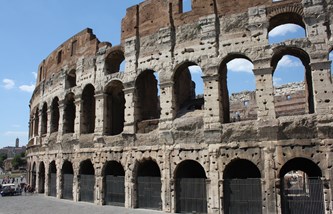Tours

Rome Tourist Card
Rome Tourist Card
Snap up the Rome Tourist Card and you'll get everything you need to explore Rome's top highlights including Colosseum, Palatine Hill, Roman Forum and Hop on/off bus. You can even choose the order you see things in.

Colosseum, Roman Forum & Palatine Hill: Priority Entrance
Colosseum, Roman Forum & Palatine Hill: Priority Entrance
Skip the long lines at the Colosseum with this priority-entrance ticket. This ticket will let you bypass the crowds. And after exploring the Colosseum you can head to the area of the Roman Forum and the Palatine Hill.
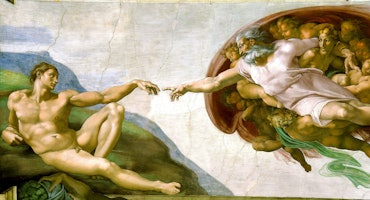
Vatican Museums & Sistine Chapel: Skip The Line
Vatican Museums & Sistine Chapel: Skip The Line
This ticket will make you save stress and time by allowing you to get priority entrance and skip the line. Visit the the countless masterpieces by Michelangelo, Raphael, Caravaggio, Tiziano and the Sistine chapel.
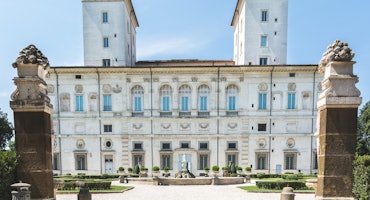
Borghese Gallery: Fast Track
Borghese Gallery: Fast Track
Galleria Borghese is located in the villa of the park Villa Borghese. Admire the architecture and furnishings of this beautiful villa. It is a museum full of art from the Renaissance. The collection includes several sculptures and paintings. Because of limited capacity get tickets for this museum weeks in advance.
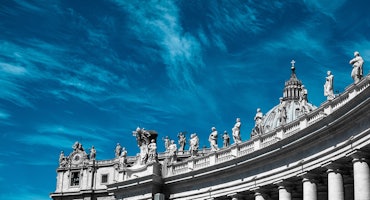
St. Peter’s Basilica: Dome Climb with Guide
St. Peter’s Basilica: Dome Climb with Guide
Get the most out of your visit to St. Peters with a guided tour to climb the basilica’s dome designed by Michelangelo and admire one of the stunning view. After the tour, you can explore the the basilica at your own pace.
The Sistine Chapel
The Sistine Chapel, as a whole, is probably the most notable masterpiece of Renaissance art. It features some of the most famous paintings of this historical period and Michelangelo’s finest frescoes. But, apart from art history and erudite considerations, there’s a reason you should come here, and make sure you include a visit to this place in your travel plan.
And it’s because, even if you are not an art expert and can’t tell a bass relief from a fresco, once you step inside this large chapel, as large as a church, you’ll instantly understand what Renaissance is about. You’ll just have to look around you: it’s all there, in the works of some of the finest artists of that era (and, in general, of all times). And, we promise, you’ll feel grateful and lucky to be able to witness all this powerful beauty.
The Sistine Chapel has many stories to tell, most of which are linked to an artist that spent a total of about 12 years here: the master of the three arts Michelangelo Buonarroti. His genius, together with his tenacious, proud, tough and rebel temper, is all on these walls and ceiling, rich in colors, perfect forms, allegorical precision and volumes’ balance.
How To Visit the Sistine Chapel
The chapel is accessible from the Vatican Museums. Inside, photography is forbidden, even with your mobile. Also, you will have to remain in silence, and please remember to mute your phone. The opening hours coincide with those of the Vatican Museum. For more information, please check our page.
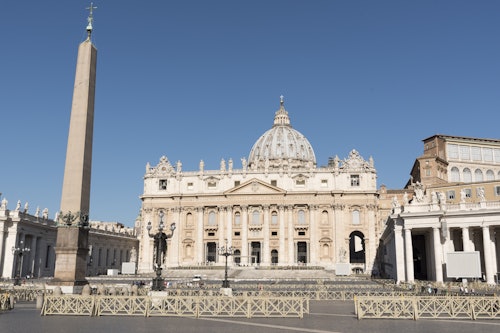
Colosseum, Vatican Museums & Sistine Chapel
Colosseum, Vatican Museums & Sistine Chapel
Join this full day tour to see the Vatican Museums and the Colosseum. A guide will be with you at all times. The ticket includes priority entrance, so you don’t have to waste time in long queues. In the morning you visit St. Peter’s Basilica, the Vatican Museums, it's art collection, and Michelangelo’s Sistine Chapel. In the afternoon, you’ll head to the Colosseum, Roman Forum and Palatine Hill, to witness the power of the biggest empire of the ancient world.

Vatican Museums & Sistine Chapel: Last Minute Tickets
Vatican Museums & Sistine Chapel: Last Minute Tickets
A fast track entry for the Vatican Museums. With the assistance of dedicated staff, you will be granted a priority access. Visit the Vatican Museums at your own pace. See the masterpieces of the greatest artists in history, such as Giotto, Raffaello, Leonardo Da Vinci, Caravaggio and Michelangelo. Be prepared to be amazed by the magnificence of the Sistine Chapel. This ticket offers you a stress-free way to visit one of the greatest art collections in the world.

Vatican Gardens, Vatican Museums & Sistine Chapel
Vatican Gardens, Vatican Museums & Sistine Chapel
Skip the line in front of the Vatican Museums and visit its art collection with a guided tour. You’ll visit Michelangelo’s Sistine Chapel, all rooms and galleries currently accessible to the public. Admire the masterpieces of artists such as Giotto, Leonardo Da Vinci, Raffaello and Caravaggio. You also have the chance to take a stroll in the exclusive Vatican Gardens, a special retreat for the Pope himself. This official tour is operated by the Vatican.
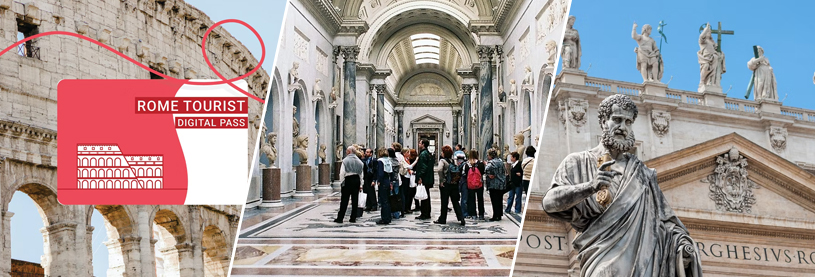
Rome tourist card
Rome wasn't built in a day, but you can see the best bits of it in one! Snap up the Rome Tourist Card and you'll get everything you need to explore Rome's top highlights. You can even choose the order you see things in, making it perfect for planning your own custom adventure.
Save money
100% digital
Hand-picked combinations
The Making of a Masterpiece
In the year 1471, when the pope (Sisto IV) was finally back in Rome after the French exile, he decided to undertake a fair amount of renovation works, as the papal estate had suffered some abandon while the authorities were away. Where the Cappella Magna (great chapel) once stood, Sisto wanted to build a new one, which took its name from him (“Sistine”= “of Sisto”). In 1482 the new chapel was ready, and included fine wall paintings and decorations by artists such as Perugino, Botticelli and Ghirlandaio.
In August 9, 1493 the first mass was held in the Sistine Chapel in honor of the feast of the Assumption. That ceremony dedicated and consecrated the Sistine Chapel to the Virgin Mary.
Sisto IV is remembered for his impetuous and despotic temper, but also for his wise financial policy and political reforms. He largely contributed to the improvement of the living conditions in the city. He was also a visionary and generous patron, who funded numerous artists during the splendid Roman Renaissance period.
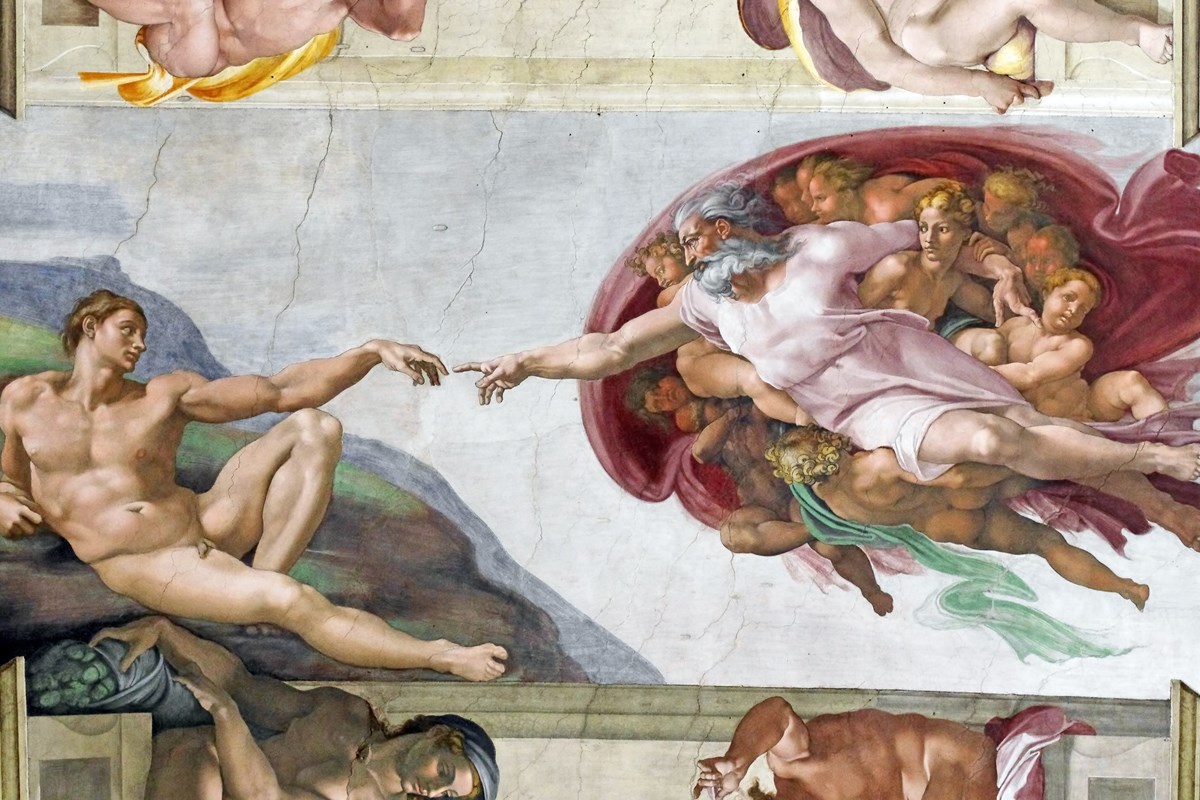
The pope considered Michelangelo one of the greatest artists of the time, and wanted him to build his funerary monument, which was going to be absolutely enormous. The artist went to the city of Carrara (home of the marble caves) and stayed about 8 months to meticulously choose the right stones. But, when he came back to Rome, it was only to find out that the pope had set aside the mausoleum project, as he was absorbed in the Bramante’s projects for the renovation of St. Peter’s.
That was the start of a turbulent relationship. So, when Sisto IV asked him to paint the ceiling of the chapel, he declined, saying that he was a sculptor and not a painter. Michelangelo also added that he should have asked Raffaello to do the job. The pope kept on insisting (an act for which we should somehow be grateful for!), but Michelangelo, who still lived in Florence at the time, was inflexible. As his refusal was starting to spark a diplomatic incident, he eventually was convinced to travel to Rome and reluctantly accept the titanic assignment.
When the works began, in 1508, the pope visited Michelangelo almost everyday to check on the frescoes. Still, the relationship between the two was never easy. Nonetheless, the undisputed genius of the artist and the forward-thinking attitude of the pope came together to produce one of the best masterpieces ever created by man.
For the record, a downsized design of Sisto’s funeral monument was completed after the pope’s death. It is situated in St. Peter in Chains and features the amazing statue of Moses.
What to See
The Sistine Chapel depicts a sort of “spiritual journey” of humanity, starting from the Creation and ending with the Last Judgement. Before we briefly describe Michelangelo’s tremendous efforts, let’s just mention that the chapel has also been decorated by artists of the likes of Ghirlandaio, Perugino, Botticelli and Pinturicchio.
Michelangelo’s work was needed to restore the ceiling, originally painted as a starry sky, but badly damaged by a large crack, due to structural issues.
THE GENESIS
The main panels of the ceiling depict scenes of the Book of Genesis, the Creation and the Fall from Grace. On the sides, you can see the main prophets, and the lunettes with scenes from the history of the Hebrew people. In total, there are more than 300 figures: an astonishing number, considering that Michelangelo was asked, at the beginning, to paint only 12.
“The Creation of Adam”, where God touches the finger of the first man, giving him the breath of life, stands out as one of the most famous frescoes in the world: how amazing to have it finally in front of your eyes! The more the frescoes get close to the altar, the more dramatic they become, with the three scenes of the creation and the huge painting of Jonah, expressing all his divinatory power.
THE LAST JUDGEMENT
When Michelangelo painted the wall of the altar (between 1536 and 1541), more than 20 years had passed from his first intervention in the chapel. His art had evolved, becoming more tormented and focused on spirituality. The sacking of Rome, in 1527, perpetrated by a great number of Spanish and Lansquenet troops at the command of the German Empire, had left the city humiliated and on its knee. The army was responsible for acts of vandalism, pillaging, and, on top of that, they also brought a terrible plague. Michelangelo was deeply shocked by what happened, and his art reflects all those troubled feelings.
Somehow, the artist had a second thought about the whole way in which he had conceived art up to that moment. In the Last Judgment we can clearly see this torment, as even the figures of the Beati are terrified, because divine justice is inscrutable. The judge of human existence and behavior is God alone. But wait: the human figure and spirit is far from fearful. Even if men are conscious of their sins, they stand heroically in front of the divine authority.
If you observe the whole fresco, you will notice a “wave” of movement. On the right hand side, all figures seem to head down, while at the left, they rise. The visual effect is one of a whirlwind, which originates from the gesture of the Lord, sitting at the top.
The fresco was largely praised but also criticized for its fair amount of nudity. Just a few days before Michelangelo’s death, in 1564, a high commission of the Vatican church decided to cover the nudity on the fresco with painted drapes. The task was carried out by Daniele da Volterra, nicknamed Braghettone (which means “someone who puts on britches”). Luckily, this unpopular and largely criticized intervention, avoided the demolition of the frescoes, caused by the church’s new rules that forbid “religious nudity” in artworks.
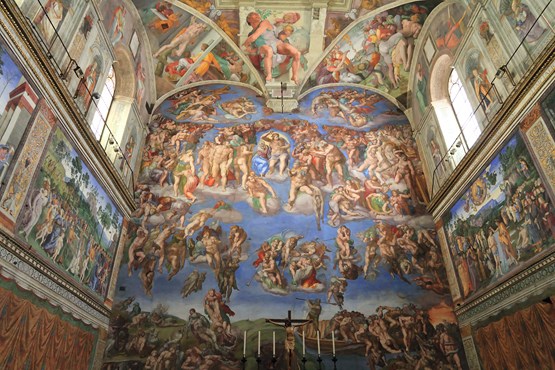
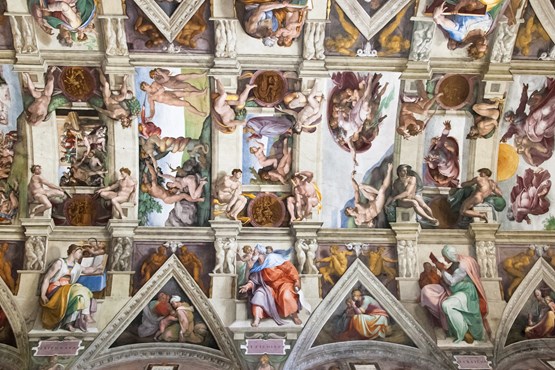
Michelangelo’s genius and struggle
The vault of the chapel has a total surface area of approximately 500 square meters. The artist painted it in about 4 years, between 1508 and 1512, and (mostly) on his own. At some stages, he hired some assistants, but soon fired them or assigned to them very basic tasks, such as mixing the colors, as he was not satisfied with their skills. Michelangelo worked on a scaffolding that he personally designed. He painted both in vertical and horizontal position. He describes the working conditions as very harsh, as he suffered from constant back and neck pain. Nevertheless, he managed to create this masterpiece in a relatively short time span.
By the time he started working on the Last Judgment, in 1536, the artist was already sixty years old. The task was terribly demanding, and there is a detail that confirms that on the fresco itself. Just below Jesus Christ, there is the figure of St. Bartholomew, a martyr who was tortured and skinned alive. In the fresco, the saint appears holding his skin. But the interesting fact is that, according to a number of studies, the skin’s facial features represent Michelangelo’s self portrait, which is a way of showing how much his artistic endeavors were slowly consuming him.
Against all odds, Michelangelo had many more years of outstanding creativity and when he died, in 1564, he was celebrated with the same honors that are reserved for a king. He is buried in Florence, in the church of Santa Croce. His mortal remains rest under a monument designed by another great artist of the time, Vasari, and decorated with three mourning statues representing the three arts: sculpture, architecture and painting.
The force of his skills in depicting the human figure has even lead to coin a new Italian word (terribilità), which refers to the incredibly dramatic expressiveness of his style, particularly evident, for example, in the facial features of its famous Moses.
Solemn Ceremonies
The chapel hosts the Conclave, the general assembly of the cardinals from all over the world. They all come here whenever a new pope is elected. While the high rank clergymen are inside the chapel, for matters of secrecy, no one can get in or come out. They are literally locked inside, therefore the name “conclave ,which means “with the key” (cum clave).
The Sistine Chapel is also the venue chosen for important events of the Papal calendar. There is a permanent choir performing music that has been specifically written and scored keeping in mind the features and dimensions of the chapel. Probably, the most famous one is the Miserere by Gregorio Allegri.
Recent Restoration
Despite almost constant maintenance and care, the frescoes were, after almost five centuries, covered with a thick layer of dust, some of which was caused by environmental pollution. Also, the vaults suffered small cracks. To address the walls’ structural issues and bring the frescoes back to their original splendor and liveliness, it was necessary to plan significant restoration work.
This massive intervention, which involved a great number of experts, began in 1980 and took about 15 years to fully complete, was mostly funded by the Japanese Television Network, who retained the rights to show the pictures of the chapel during and right after the “make over”. Widely considered the most complicated restoration in art history, it brought back to light an astonishing and vivid color scheme. One fun fact: these works took longer than the actual total time it took Michelangelo to paint the whole chapel.
Saint John Paul II celebrated the final opening with these words: “It would be difficult to find a more eloquent visual commentary on this biblical image than the Sistine Chapel, whose full splendor we are able to enjoy, thanks to the recently completed restoration works. The devotees from every part of the world are joined with us in our joy. This place is dear to worshippers not only for the masterpieces it holds, but also for the role it plays in the life of the Church”.
FAQ
Where is the Sistine Chapel?
The Sistine Chapel is in the Vatican Museums
What is the Sistine Chapel used for?
The Sistine Chapel is used for the Oclave. Cardinals gather to elect a new Pope
Why is the Sistine Chapel so famous?
The Sistine Chapel owes its fame to the ceiling painting 'the creation' made by Michelangelo
How many hours did it take to paint the Sistine Chapel?
Michelangelo took four years to make the paintings on the ceiling
